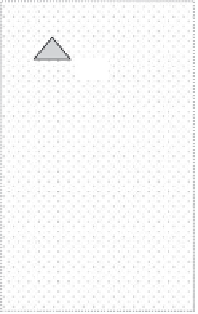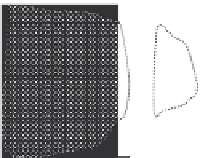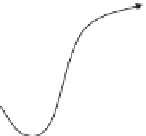Environmental Engineering Reference
In-Depth Information
PRB, Permeable
reactive barrier
Contaminant
plume
k
value generally
between 10
-5
and
10
-7
cm/s
Physical
Density γ
Porosity
n
Hydraulic
conductivity
Calculated exposed
surface area
PRB thickness
governed by
k
value
and time required for
contaminant plume to
stay in residence
Waste
Maximum
k
value
must be <10
-7
cm/s
Drainage layer
Characterized by
Darcy coecient of
permeability
k
HDPE membrane
Engineered
clay barrier
Barrier thickness
generally 1 m or more
Physical Indicators
k
, γ, and
n
k
= f (γ,
n
)
Natural soil
FIGURE 13.5
Prescription of hydraulic conductivity indicators based on intended function of soil. Since the
k
value deter-
mined is a function of density and porosity, the weighting factor for
k
is considerably larger than those for
density and porosity. The calculated exposed surface area is a parameter of interest and may be neglected. The
thicknesses of the PRB and ECB are determined by situation-speciic conditions. Thickness of 1 m or more for
the ECB is quite common for containment of MSW landills.
now be obtained. The prescription of attribute indicators and their application can be seen
in Figure 13.5 for the example of hydraulic conductivity. Given that hydraulic conductivity
(as characterized by the Darcy
k
value) is a direct function of density and porosity—i.e.,
k
=
f (γ,
n
) where γ refers to soil density and
n
refers to porosity—the
weighting
of data for γ
and
n
becomes important. Application of weighting factors in such situations is to a large
extent based on knowledge of previous behavior.
Determination of weighting factors to be used for all the data sets relating to the physi-
cal, chemical, and biological attributes can be a challenging task. Much depends on the
experience and knowledge of the analyst. The results of the weighted data are used in
a deterministic model that is designed to produce a lumped index known as the quality
index. As stressed previously, the quality index will have a preix that denotes the func-
tion of the material, for example,
drinking water quality index
and
contamination mitigation
soil quality index
.
13.4.1.2 Water Quality Index WQI
Research and development of water quality indices have not received the same level
of attention as for SQI in soil science. Instead, attention has been focused more on the
establishment of national standards. Because of the very direct relationship between the
























Search WWH ::

Custom Search